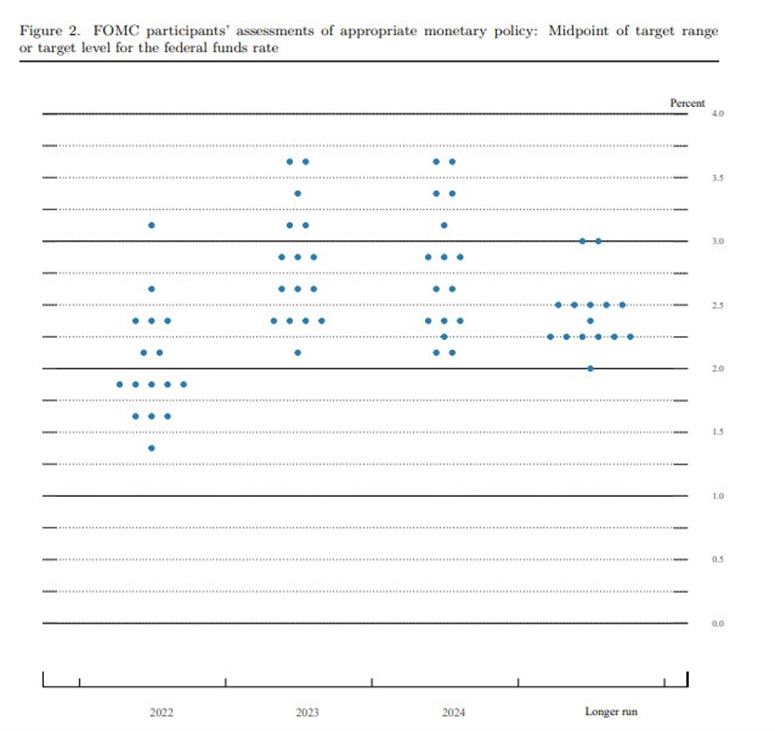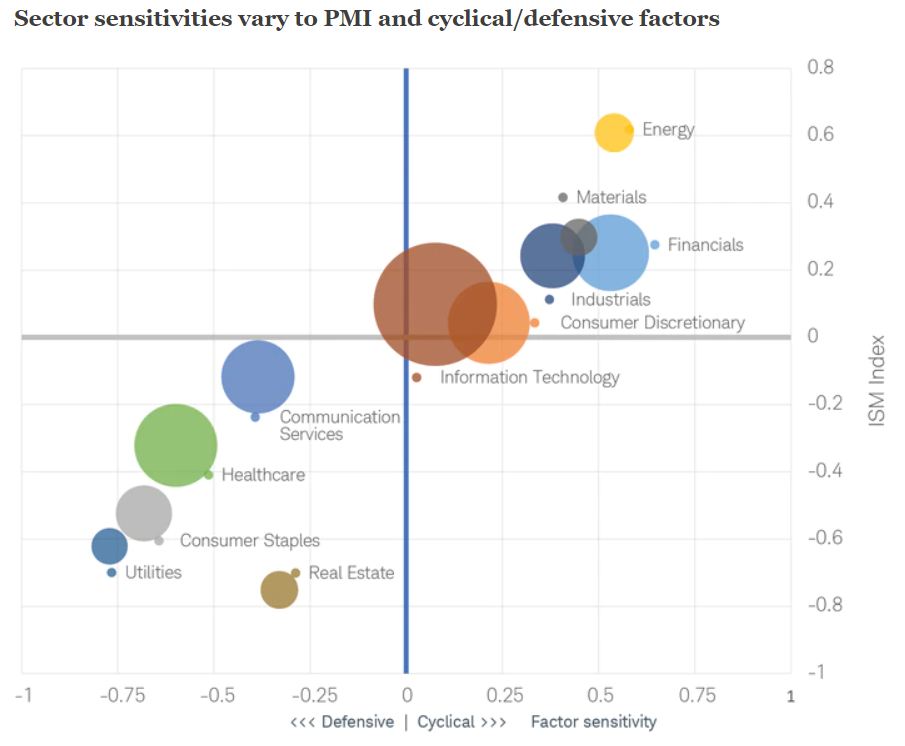
The financials sector is the lifeblood of any economy. For this reason, its performance is often intertwined with the overall health of the economy.
2020 was a tough year for financials as economic growth stalled due to the pandemic. But as the economy reopened in 2021, the sector staged a remarkable recovery. It gained nearly 33% last year, outperforming the S&P 500’s 27% return.
Here’s 5 things to know.
1. Higher interest rates tend to be good for financials
The Federal Reserve just raised interest rates for the first time since 2018. The Fed has kept the fed funds rate near zero to boost the economy amid the coronavirus pandemic. Many bank shares rose on optimism that higher rates will improve their profits.
Interest rates impact the financials sector. Most banks make money by charging customers higher interest rates on loans as compared to what they pay customers for deposits. When rates rise, so do their net interest margins.
For insurance companies, higher interest rates benefit their fixed-income holdings as well. That’s because insurers tend to hold a lot of bond investments to back the insurance policies they write.
Inflation has now reached a four-decade high in the US. By signalling hikes at all six remaining Fed meetings this year, the Fed is prepared to move more aggressively to curb soaring prices.
In the Fed’s new dot plot after its March policy meeting, the median benchmark rate is projected to end this year at about 1.9% and rise to 2.8% in 2023.

2. Financials is a cyclical sector
Cyclical sectors are those that are highly sensitive to business cycle peaks and troughs. They tend to perform well when the economy is thriving or recovering from a downturn.
Financials, energy, industrials, consumer discretionary and materials are the most cyclical sectors. When manufacturing growth, as measured by the manufacturing PMI index, is rising, they tend to do well. That’s to be expected since a strong economy supports greater consumer spending, which in turn translates to greater demand for goods and services.

Additionally, financial institutions tend to face fewer loan defaults when the economy is good. Higher spending also spurs a higher demand for consumer and business loans.
3. Not just banks
The financials sector includes the following segments:
Banks: Retail, commercial, and investment banks.
Investment services: Brokerage firms, financial advisors, asset managers, hedge funds, and private equity funds occupy this space
Insurance: Life insurers, accident and health insurers, property insurers and reinsurance companies fall into this category
There are 67 constituents in the S&P 500 financials index and the largest by index weight is Warren Buffett’s Berkshire Hathaway.
4. The Warren Buffett connection
Here’s a fun fact. Warren Buffett, probably the best stock investor in the world (and the CEO of Berkshire Hathaway), is known to favour financial stocks.
As of 31 December 2021, a third of Berkshire Hathaway’s 15 largest equity holdings were financial stocks: American Express, Bank of America, The Bank of New York Mellon, Moody’s and US Bancorp.
In his latest annual letter to Berkshire shareholders, Warren Buffett noted that Berkshire places emphasis on investing in strong businesses and stocks for the long-term.
5. How to invest in the financials sector
Investors can choose to invest in individual financial stocks or financial sector ETFs.
Well-known financial ETFs include:
- Financial Select Sector SPDR Fund (XLF) which tracks the S&P 500 Financials sector
- iShares Global Financials ETF (IXG) which invests in big global financial firms
- Invesco KBW Bank ETF (KBWB) which focuses only on US bank stocks
- Ark Fintech Innovation ETF (ARKF) which invests in global fintech companies

Whether you want to invest in financial stocks or ETFs, Syfe enables you to do so easily and affordably.
For DIY investors, you can use Syfe Trade to invest in specific stocks and ETFs. You enjoy free trades every month and super low commissions on trades thereafter.
Prefer to build your own portfolio? Consider using the Syfe Select Custom portfolio. You get to pick from over 100 top ETFs and determine your portfolio allocation. A Custom portfolio makes it easier to dollar cost average each month since your funds will be automatically invested into your chosen ETFs.
Ready to get started? Simply download the Syfe app and use Singpass to create your account in under 3 minutes.






You must be logged in to post a comment.